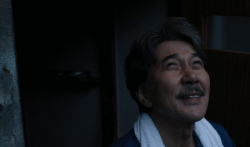Perhaps only a few of us remember the decadence of new wave in the ‘80s via the memorable Flock of Seagulls hairdos of our older siblings, and their moodiness that precipitated endless spins of Depeche Mode’s Violator. Maybe we relive the magic through Behind the Music’s profile of 1982. But while there are numerous Rhino compilations from the era, there is little evidence to prove the existence of one particular musical movement: no wave. While new wavers were gazing at their shoes to the sounds of New Order and Depeche Mode, rockers in New York City were creating their own static, hype and noise—and all with as little synthesizer as possible.
Though it’s hard to pinpoint exactly who began the movement, there are a few important names to be dropped. ESG, a Brooklyn troupe comprised of the four Scroggins sisters, churned out stripped down, melodic bass and percussion heavy hits such as “Erase You” and “Moody.” Liquid Liquid also worked the no wave scene and hit it particulary big when Grandmaster Flash sampled their song “Cavern” for his hit “White Lines.” James Chance and the Contortions (also known as James White and the Blacks) sounds like a cross between ESG and the Clash’s “Magnificient 7.” Not surprisingly, no wave and the emerging hip-hop scene were closely tied. Most no-wave hits were easily sampled; their beats were perfect foundational rhythms, as percussion dominated most of the tracks.
Despite its short life span, there were two different factions within no wave: the aforementioned dance funk sound and another sound typified by the group DNA, which virtually birthed what is today’s experimental noise rock. DNA was as danceable as ESG, employing an entirely original chaotic brand of percussion, horns and screams. ESG and Liquid Liquid maintained a simplistic, less cacophonous sound, while other performers such as Lydia Lunch and a previous band, Teenage Jesus and the Jerks, proved that there was nothing mellow about the no-wave scene. The Theoretical Girls were a less chaotic but equally cochlea-combusting group; singer/guitarist/bassist Glen Branca went on to write lush guitar symphonies collaborating with Lee Ranaldo and Thurston Moore, who would later form the legendary Sonic Youth. Riding the tail of the no wave movement, Sonic Youth established itself amongst its fans as an experimental noise act while the term no wave and its bands began to slowly vanish from the New York scene.
Neo-no wave groups have started a new type of sound, and this time it isn’t just limited to the Big Apple. Oakland’s Erase Errata set the tone for a new kind of chaos with its complicated, hectic guitars, blasting horns and sputtered, operatic vocals. Growing out of this chaos are other noise bands such as Lightning Bolt from Providence, R.I. , a two member guitar-drum attack, as well as XBXRX a now-defunct explosion of speed and sound banned from its hometown of Mobile, Ala.
It’s probable this revival of no wave will dissolve as quickly as its forebearer, so a short trip to the Black Cat is in order this Friday. Avoiding the garage-rock infection in New York, headliners The Rapture has instead created a well-crafted noise, funk and dance vibe. While there is clearly justified hype around the group, their openers are not to be missed. Recently signed to Dischord, D.C.’s Black Eyes have a distinct sound-they have two drummers, two bassists, and two singers-that is hard to place. Their creative use of samples, layered vocals, synchronous, spastic drum beats and a whole lotta cowbell can be somewhat described as experimental neo-no-wave noise. Go to Black Cat tomorrow night and don’t say no to no wave.
The Black Cat is located at 1811 14th St. N.W.




